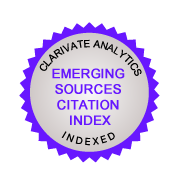Understanding Language Learning: Review of the Application of the Interaction Model in Foreign Language Contexts
Keywords:
Input, interaction, output, EFL settings, language learningAbstract
Purpose – This paper examined the application of the inputinteraction-output model in English-as-Foreign-Language (EFL) learning environments with four specific questions: (1) How do the three components function in the model? (2) Does interaction in the foreign language classroom seem to be effective for foreign language acquisition? (3) What factors might facilitate/impede interaction, which, in turn, positively or negatively affect output? (4) What are effective teaching methods to enhance interaction and ensure quality of output? Methodology – A systematic search for empirical studies was conducted in the selected databases, which yielded 26 studies from different parts of the world. These studies met the preset criteria concerning medium of instruction, setting, relevancy and quality. Findings – The review demonstrated that when input, interaction and output worked together, positive English leAdditional Files
Published
25-12-2014
How to Cite
Dixon, L. Q., & Wu, S. (2014). Understanding Language Learning: Review of the Application of the Interaction Model in Foreign Language Contexts. Malaysian Journal of Learning and Instruction, 11, 23–39. Retrieved from https://e-journal.uum.edu.my/index.php/mjli/article/view/7663
Issue
Section
Articles
























